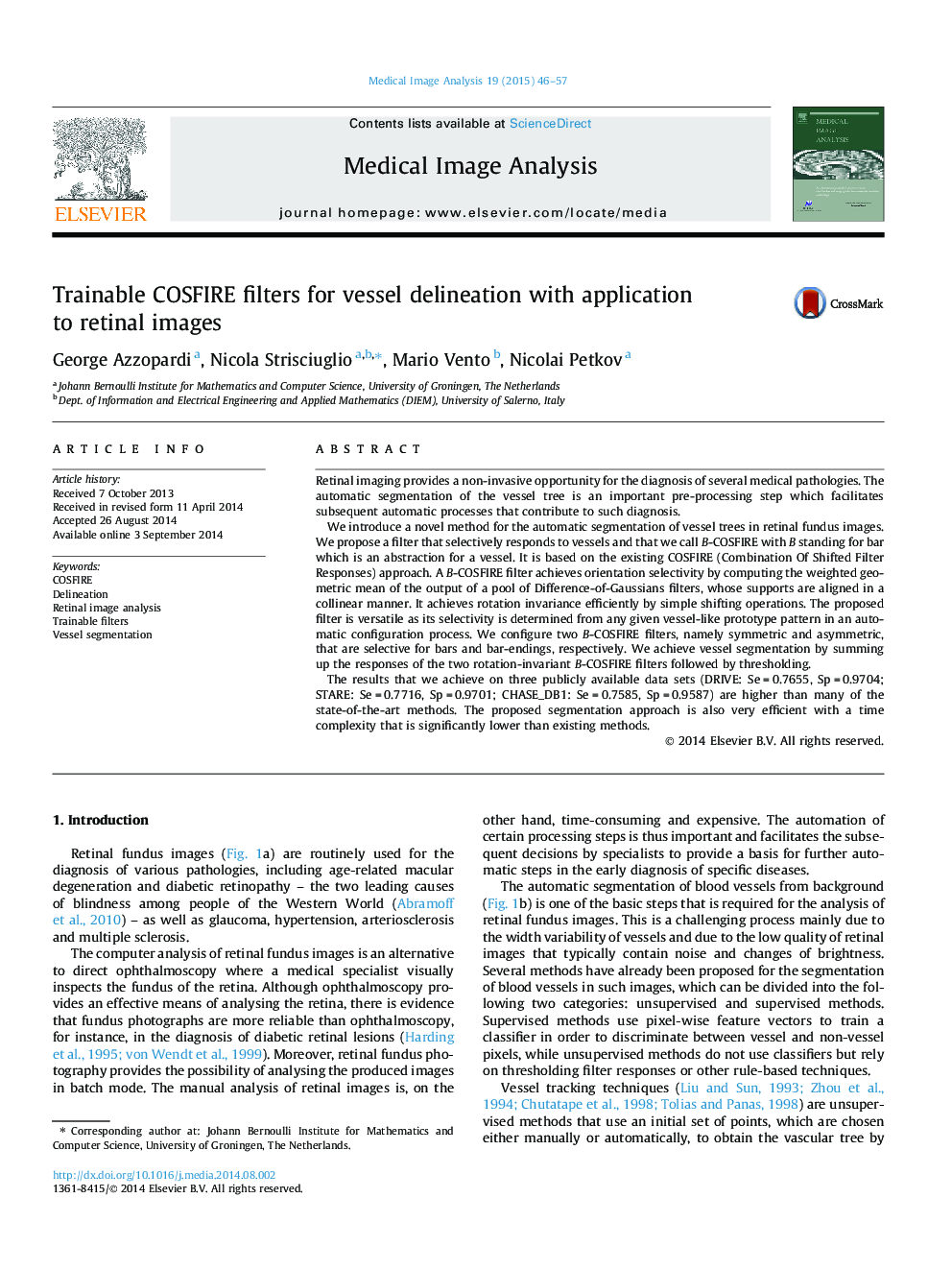| کد مقاله | کد نشریه | سال انتشار | مقاله انگلیسی | نسخه تمام متن |
|---|---|---|---|---|
| 443892 | 692805 | 2015 | 12 صفحه PDF | دانلود رایگان |

• We propose B-COSFIRE filters for the segmentation of blood vessels in retinal images.
• A B-COSFIRE filter combines the aligned responses of DoG filters with geometric mean.
• B-COSFIRE filters are trainable and achieve rotation-invariance efficiently.
• We evaluate the B-COSFIRE approach on DRIVE, STARE and CHASE-DB1 benchmark data sets.
• We achieve better effectiveness and efficiency than other unsupervised approaches.
Retinal imaging provides a non-invasive opportunity for the diagnosis of several medical pathologies. The automatic segmentation of the vessel tree is an important pre-processing step which facilitates subsequent automatic processes that contribute to such diagnosis.We introduce a novel method for the automatic segmentation of vessel trees in retinal fundus images. We propose a filter that selectively responds to vessels and that we call B-COSFIRE with B standing for bar which is an abstraction for a vessel. It is based on the existing COSFIRE (Combination Of Shifted Filter Responses) approach. A B-COSFIRE filter achieves orientation selectivity by computing the weighted geometric mean of the output of a pool of Difference-of-Gaussians filters, whose supports are aligned in a collinear manner. It achieves rotation invariance efficiently by simple shifting operations. The proposed filter is versatile as its selectivity is determined from any given vessel-like prototype pattern in an automatic configuration process. We configure two B-COSFIRE filters, namely symmetric and asymmetric, that are selective for bars and bar-endings, respectively. We achieve vessel segmentation by summing up the responses of the two rotation-invariant B-COSFIRE filters followed by thresholding.The results that we achieve on three publicly available data sets (DRIVE: Se = 0.7655, Sp = 0.9704; STARE: Se = 0.7716, Sp = 0.9701; CHASE_DB1: Se = 0.7585, Sp = 0.9587) are higher than many of the state-of-the-art methods. The proposed segmentation approach is also very efficient with a time complexity that is significantly lower than existing methods.
Figure optionsDownload high-quality image (225 K)Download as PowerPoint slide
Journal: Medical Image Analysis - Volume 19, Issue 1, January 2015, Pages 46–57